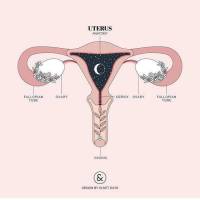A.M. Jukic, D. B. (2013, October 13). Length of human pregnancy and contributers to its natural variation. Retrieved from ncbi.nlm.nih.gov: https://www.ncbi.nlm.nih.gov/pmc/articles/PMC3777570/
ABC Law Centers. (n.d.). Pitocin Induction and Birth Injury. Retrieved from abclawcenters.com: https://www.abclawcenters.com/practice-areas/prenatal-birth-injuries/labor-and-delivery-medication-errors/pitocin-and-oxytocin/
Americanpregnancy. (2017, Month 24). Epidural Anasthesia. Retrieved from americanpregnancy.org: http://americanpregnancy.org/labor-and-birth/epidural/
AsianScientist. (2012, March 12). Unnecessary Induction of Labor Linked to Birth Complications Study. Retrieved from asianscientist.com: https://www.asianscientist.com/2012/04/health/inducing-labor-in-pregnant-women-linked-to-birth-complications-2012/
Briggs, H. (2016, December 7). Caesarean births ‘affecting human evolution’. Retrieved from bbc.co.uk: http://www.bbc.co.uk/news/amp/science-environment-38210837
Buckley, S. (2016, February 10). Epidurals: Real Risks for Mother and Baby. Retrieved from birthinternational.com: https://birthinternational.com/article/birth/epidurals-real-risks-for-mother-and-baby/
Campbell, D. (2009, July 10). It’s good for women to suffer the pain of a natural birth, says medical chief. Retrieved from theguardian.com: https://www.theguardian.com/lifeandstyle/2009/jul/12/pregnancy-pain-natural-birth-yoga
Davis, A. (2013, May 30). Choice, policy and practice in maternity care since 1948. Retrieved from historyandpolicy.org: http://www.historyandpolicy.org/policy-papers/papers/choice-policy-and-practice-in-maternity-care-since-1948
Dodd, R. M. (2011). Short and Long-term Outcomes after Cesarean Section. Retrieved from http://www.medscape.com: https://www.medscape.com/viewarticle/739458_2
Eugene R. Declercq, C. S. (2014, Winter). Major Survey Findings of Listening to Mothers: Pregnancy and Birth. Retrieved from ncbi.nlm.nih.gov: https://www.ncbi.nlm.nih.gov/pmc/articles/PMC3894594/
Goodtoknow. (2015, October 29). One Born Every Minute terrifying new mums. Retrieved from goodtoknow.co.uk: http://www.goodtoknow.co.uk/family/544547/one-born-every-minute-terrifying-new-mums
Griffiths, C. (2017, September 10). GIRL ABOUT TOWN: Call the midwife! Duchess of Cambridge is keen on a home birth for her third baby. Retrieved from dailymail.co.uk: http://www.dailymail.co.uk/tvshowbiz/article-4868988/GIRL-TOWN-Kate-keen-home-birth.html
Hill, M. (2015, November 9). Love Birth? You probably hate One Born Every minute. Retrieved from activebirthcentre.com: http://activebirthcentre.com/birth-2/one-born-every-minute-milli-hill/
Johanson, R. (2002). Has the medicalisation of childbirth gone too far? NCBI, 892–895.
Kirkham, M. (1999). The culture of midwifery in the National Health Service in England. PubMed, 732-739.
Kirkup, D. B. (2015). The Report of the Morcambe Bay Investigation. London: The Stationary Office.
Luce, A. (2016). “Is it realistic?” the portrayal of pregnancy and childbirth in the media. BMC.
NCT. (2014, March). Maternity Statistics-England. Retrieved from nct.org.uk: https://www.nct.org.uk/professional/research/maternity%20statistics/maternity-statistics-england
NetMums. (2011, April 1). People wanting to scare me with their pregnancy and birthing stories. Retrieved from netmums.com: https://www.netmums.com/coffeehouse/pregnancy-64/pregnancy-stories-863/557973-people-wanting-scare-me-their-pregnancy-birthing-stories.html
NHS. (2016, November 9). Hospital Maternity Activity 2015-16. Retrieved from digital.nhs.uk: http://digital.nhs.uk/catalogue/PUB22384
Pasha-Robinson, L. (2017, September 7). Billion pound clinical negligence bills ‘threatening NHS finances’. Retrieved from Independent.co.uk: http://www.independent.co.uk/news/uk/home-news/nhs-clinical-negligence-bills-finances-budget-healthcare-trusts-doctors-a7934546.html
PubMed Health. (2012, July 19). Pregnancy and birth: Epidurals and painkillers for labor pain relief. Retrieved from www,ncbi.nlm.nih.gov: https://www.ncbi.nlm.nih.gov/pubmedhealth/PMH0072751/
Rushing, J. N. (2011, June). Cesarean versus Vaginal Delivery: Long term infant outcomes and the Hygiene Hypothesis. Retrieved from ncbi.nlm.nih.gov: https://www.ncbi.nlm.nih.gov/pmc/articles/PMC3110651/
Sciencedaily. (2015, June 22). Molecular mechanisms within fetal lungs initiate labor. Retrieved from http://www.sciencedaily.com: https://www.sciencedaily.com/releases/2015/06/150622162023.htm
Smith, G. C. (2001, July 1). Use of time to event analysis to estimate the normal duration of human pregnancy. Retrieved from academic.oup.com: https://academic.oup.com/humrep/article/16/7/1497/693431/Use-of-time-to-event-analysis-to-estimate-the
Stoll, K. (2014). Why are young Canadians afraid of birth? A survey study of childbirth fear and birth preferences among Canadian University students. MidwiferyJournal, 220-226.
Thielking, M. (2015, December 1). Sky-high C-section rates in the US don’t translate to better birth outcomes. Retrieved from http://www.statnews.com: https://www.statnews.com/2015/12/01/cesarean-section-childbirth/
UCLAN. (2016, March). Interventions in Normal Labour and Birth. Retrieved from rcm.org.uk: https://www.rcm.org.uk/sites/default/files/Labour%20Interventions%20Report%20A4%2020pp%202016_3.pdf
Walsh, D. (2009, June 18). Pain and Epidural Use in Normal Childbirth. Retrieved from http://www.rcm.org.uk: https://www.rcm.org.uk/learning-and-career/learning-and-research/ebm-articles/pain-and-epidural-use-in-normal-childbirth
WHO. (2015, April). WHO statement on ceasarean section rates. Retrieved from http://www.who.int: http://www.who.int/reproductivehealth/publications/maternal_perinatal_health/cs-statement/en/
